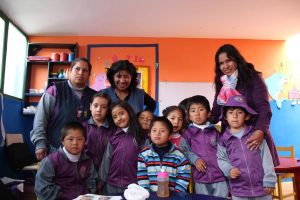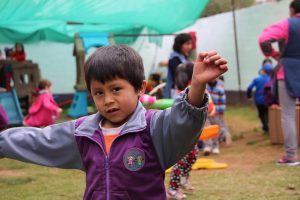
There are many obstacles to improving the quality of education in rural Peruvian communities. What we try to do, in partnership with students, teachers, and parents, is find paths around those obstacles. Nevertheless, as it is with everything, each solution leads to new obstacles, new possible solutions, etc.
Our biblioteca projects offer a fun and flexible space where children can practice creativity and critical thinking while reinforcing their classroom lessons. The tiny details of what activities are used, and when, depends on the kids and parents. It is working – but not without new obstacles.
Recently, some of our teachers have mentioned that kids only want to play, and do not want to identify the links between the game and their school courses. This was troubling, because if the kids don’t take that next step, beyond play to the game’s connection with their academic lessons, the project is pointless. So we went out to see how the teachers were presenting the tasks to the children, and how the children were responding.
What we found was that the task of identifying the connections between say, marbles and multiplication, was being separated from the actual playing of marbles. Some of our teachers had reverted back to the common teaching style: theory first, practice second. It is a common strategy, but it is detrimental to our aim of project-based learning. By the time the students are done with the theory, the practice (play) is no longer appealing. Creative, critical, and practical learning opportunities are lost.
We sat down with our hired teachers, the classroom teachers, and the students to reorganize the presentation of the project to the students. Although the theory and practice are technically two different steps, both must happen simultaneously for the children to activate their critical thinking. They must be entirely engaged in the activity in order to fully recognize and experience the connections with their classroom lessons. When we joined these steps, and had the students brainstorm on academic themes within the games while actually playing them, we found that the students were not only able but excited to do so. It was a problem of presentation and organization of tasks, not of motivation of the students.
Issues such as this are the reason we have a teacher training program that runs parallel with our biblioteca projects in order to ensure that these problems are addressed, shared, analyzed, and corrected. In this way the teachers can join theory and practice just like the students. In the end, we all learn.

